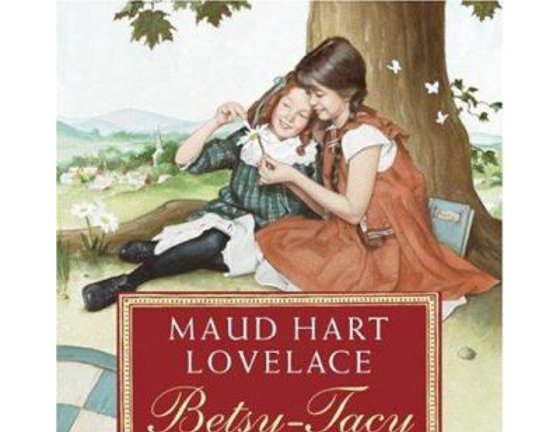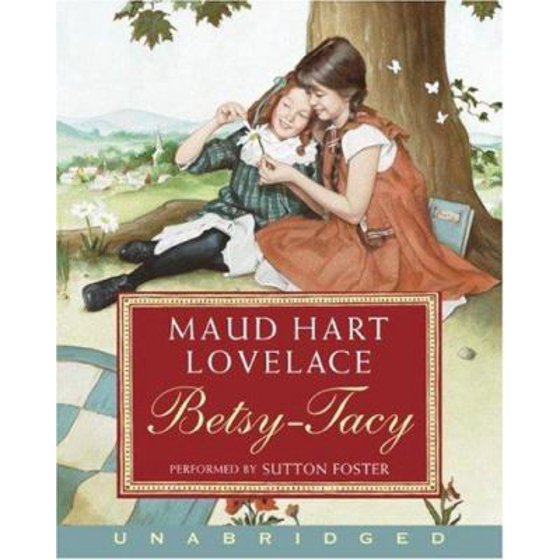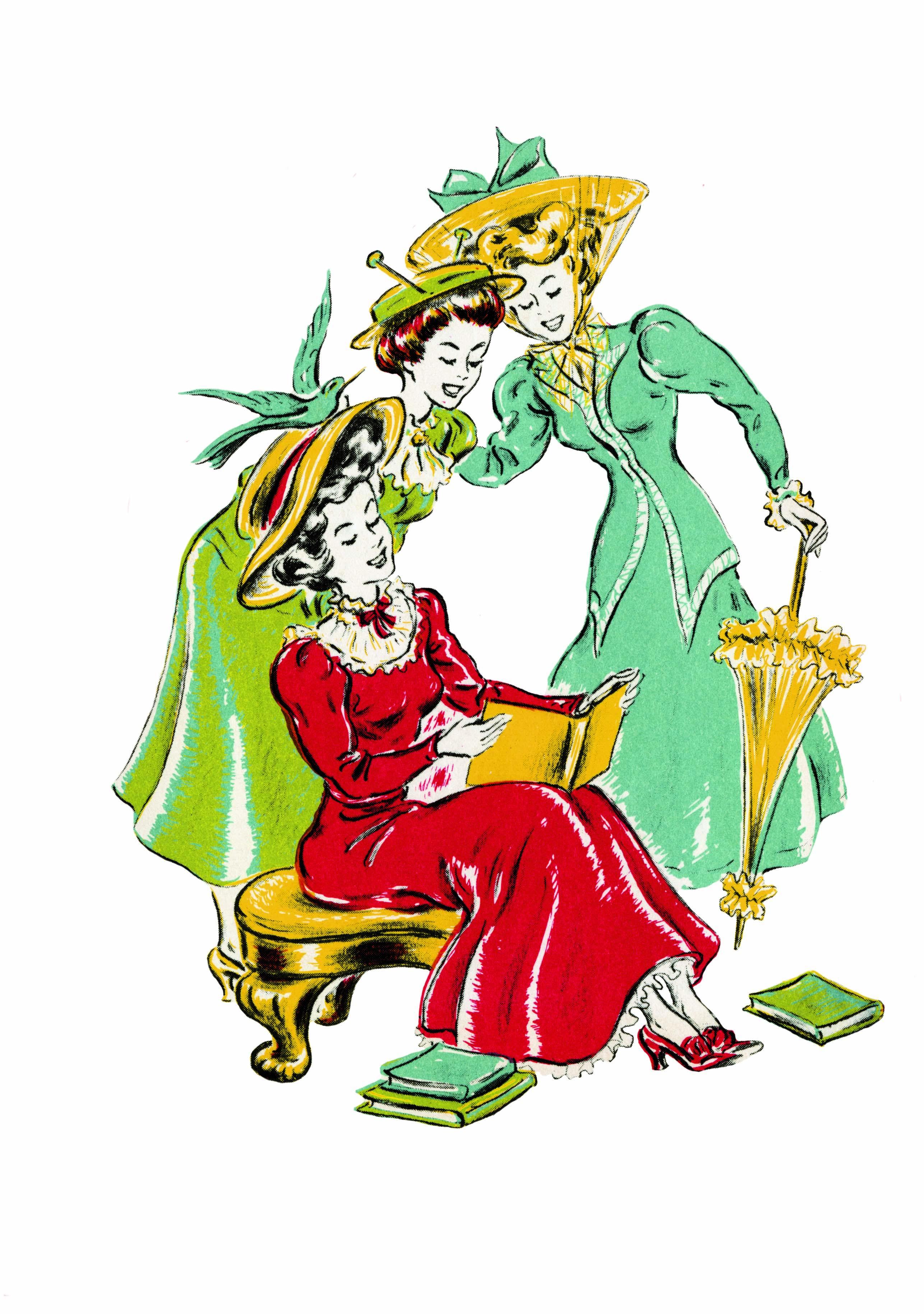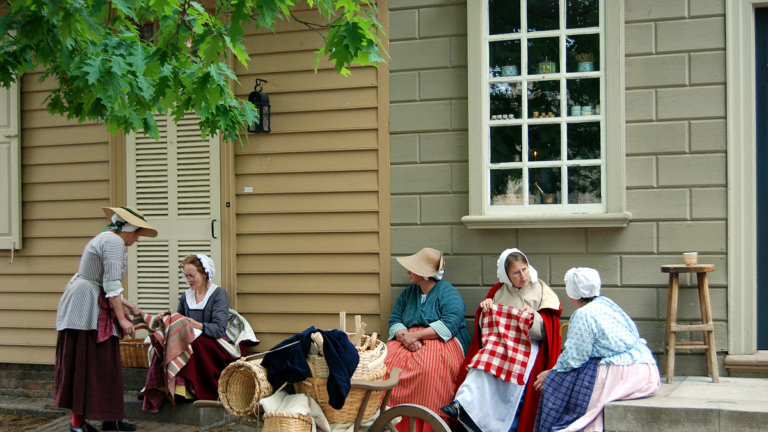Book Review: Betsy-Tacy Series

by Catherine Scholar, First published for the January/February 2011 issue of Finery

Why review a beloved children’s series for a costume newsletter? It’s a fair question, one the author partially answered herself: “in these Betsy-Tacy stories, I love to work from real incidents.” The Betsy-Tacy books were based closely upon author Maud Lovelace’s own life, and almost all of Betsy’s adventures were also Maud’s. Betsy’s high school journal entries are often verbatim copies of Maud’s, and many of the books’ illustrations are clearly derived from Lovelace’s personal photographs.
So where’s the costuming? Another fair question! The books begin with Betsy’s fifth birthday in 1897 and ends with her husband’s enlistment in the war. Along with a lovely portrait of growing up in a small Midwestern town at the turn of the 20th century, the books are overflowing with descriptions of clothing, hairstyles, and fads.
For Betsy’s fifth birthday party, her mother makes her first silk dress, “checked tan and pink, with lace around the neck and sleeves.” More interesting is the description of what came underneath: “the silk dress rustled beautifully over two starched petticoats which were buttoned to a muslin underwaist over woolen underwear. The legs of the underwear were folded tightly under her white party stockings and into the tops of her shoes.” Betsy’s hair was curled on rags instead of braided for the occasion. There is a photograph of Maud Lovelace, aged five, in this exact dress with her hair curled.
It’s in the high school books that the clothes get truly delicious. We hear about sailor suits and dimity dresses, and perfectly dreamy party dresses. To a less formal party, fourteen-year-old Betsy wears “a white openwork waist over a pale blue cambric underwaist, a white duck skirt… and a large pale blue hair ribbon.” The underwaists seem to be interchangeable, as there is a fair amount of discussion about which color should be worn underneath.
The party dresses are mostly silk, with a couple of wintry exceptions for wool or velveteen. Betsy describes getting dressed for her first high school dance in 1908: “Betsy pinned starched ruffles across her chest, donned her prettiest corset cover, strung with pink ribbons, three starched petticoats, the outer one also strung with pink, the pink lace stockings, her high shoes. Dancing slippers, of course, would be carried in a slipper bag.” The girls change into their shoes after walking to the dance, except on one occasion when they take the pony hack, when they wear their dancing slippers the whole time. The party dresses are where we truly see the march of fashion; the description above is 1908, and the accompanying pictures (strictly vetted by Lovelace) show a tight bodice and full gored skirt. In 1909 Betsy and Tib have “princess dresses… sheath-fitting to the knees, then foamed out.” In 1912, the skirts are long and slim, and some are slit.
Like most of the families in the books, Betsy’s family’s clothes are made by a seamstress. Miss Mix actually comes to live with the family for a week or two, and sews a season’s worth of clothes for Betsy, her mother, and her two sisters. The descriptions of the thread and fabric scraps invading the whole house, and Betsy’s father’s impatience with the disruption of his routine, are priceless. A few of the mothers sew for their younger children, but by the time the girls are in high school the seamstress is making their clothes. One notable exception is Betsy’s friend Tib. Having driven her mother crazy with her fussiness over a party dress, her mother tells her to go ahead and make it herself, and Tib takes her up on the challenge. Most of the girls hand-sew and embroider (Betsy’s lack of talent in this area is much mocked), dressmaking seems to be rare.
Hair, cosmetics and beauty aids are also much discussed. When the girls are little, the hair options seem to be braids, ringlet curls, or a short bob. When Betsy and her friends turn ten, they are allowed to put up their hair in an interim style. Betsy crosses her two braids in back and ties them with ribbon bows behind her ears; Tacy gathers her long red ringlets with a bow at the back of her neck. By early high school, Betsy is curling her hair on rollers every night and wearing it in a pompadour over a rat. Tacy, less interested in boys and beauty, clings to her less fashionable Grecian braids, wrapped around her head. Hair ribbons seem to have enormous importance; they match every outfit. Abandoning the hair ribbon is a small rite of passage; the girls who have trouble growing up are the ones who cling to their childish hair styles and postpone truly putting their hair up.
Although we think of the Edwardians as eschewing cosmetics, the books describe any number of beauty aids: Facial creams, buffed nails, perfumes and powders. At age fourteen Betsy is sneaking her mother’s powder puff before going out. The next year, Betsy watches her mother dressing to go out: “she was powdered, and had darkened her reddish brows with the charred end of a match.” Betsy’s mother wishes aloud that she could wear rouge “like actresses do,” but the question is clearly absurd. A couple of months later, Betsy is shocked when she watches a friend’s big-city aunt casually applying rouge before going to a ball. Betsy bravely buys some rouge for a joke present for her mother, but she buys a back-up gift in case the joke fails. It’s clear that the joke may be too far from good taste.
The last two books of the series have fewer clothing descriptions. In one, Betsy is on her grand tour and living out of a trunk, while in the other Betsy is newly married and no longer bankrolled by her parents. Neither situation is conducive to a new dress description every page! However, there are some lovely “costumer’s” moments. In Paris, Betsy buys her Paris suit at Bon Marche. A friend takes her to see the Longchamps fashion show, where she is shocked to see slit skirts revealing colored stockings, towering heels, avant-garde hair and makeup, and even trousers on a woman, in broad daylight, in a public place! Once home, Betsy makes a more prosaic purchase of a store-bought wedding dress (nearly as shocking as those trousers, in her mother’s opinion), which even her mom has to admit is “almost as fine as a dressmaker could have made.”




Leave a comment